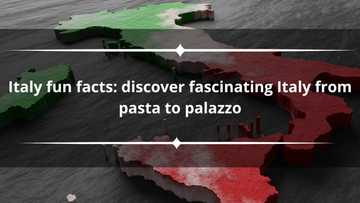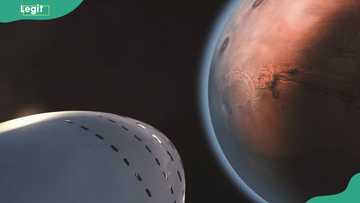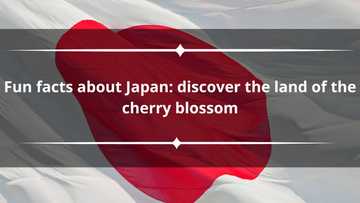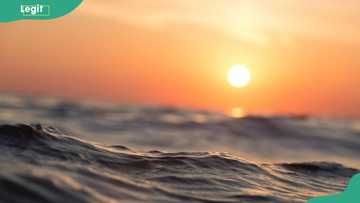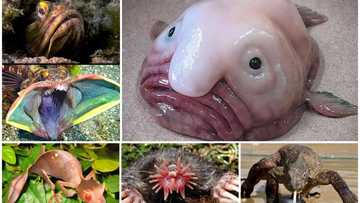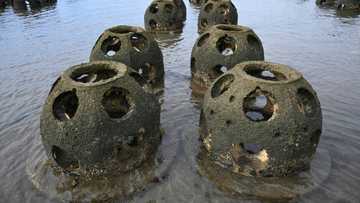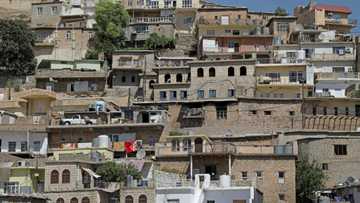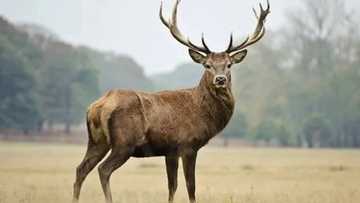63 fun facts about rocks and minerals that will rock your world
What facts about rocks do you know? Even though rocks and minerals are abundantly available, many people do not take an interest in them, yet there is a lot to learn about them. Moreover, they are one of the most utilized natural resources. Dr. Juliet Ugbede Akoh, a lecturer in the Department of Geosciences at the University of Lagos, sheds light on the difference between rocks and minerals and their formation processes and offers valuable advice for aspiring geologists and mineralogists.
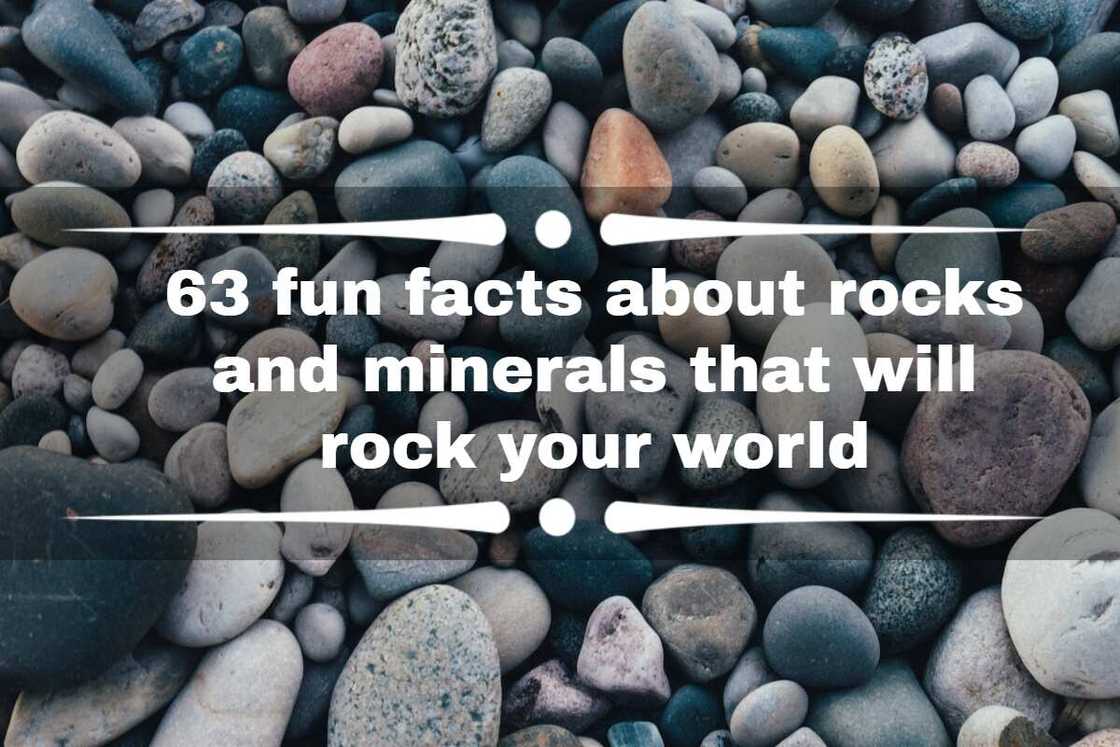
Source: UGC
TABLE OF CONTENTS
Key takeaways
- A mineral is a naturally occurring, inorganic solid with a definite chemical composition, while rock is a mass of one or more minerals.
- There are three main types of rocks: igneous, sedimentary, and metamorphic whereas there are over 4000 minerals.
- Both rocks and minerals play crucial roles in construction, energy production, and technology.
- Aspiring geologists can get hands-on experience through field trips and use geological tools like GPS and geological hammers.
Rocks are made of one or multiple minerals and are the basic unit from which the solid earth is formed. If you are curious to learn more about rocks, these facts about rocks will fascinate you while also improving your knowledge of the subject.
Fun facts about rocks and minerals
Rocks are unique since they have different formation processes, colors, shapes, sizes, and ages. There are three types of rocks categorized by their formation processes. Here is what you should know about rocks, including rock cycle facts.
- The major construction material of the Pyramid of Giza in Egypt is limestone, a sedimentary rock.
- Electronics such as radios and watches are made using Quartz. Quartz maintains an accurate frequency standard, making it desirable for use in electronics.
- Sand is one of the raw materials used in making glass. It is combined with other materials, heated at high temperatures, and forms glass when it cools.
- Gold, one of the most precious metals in the world, is underexploited. It is estimated that 80% of gold has not been discovered.
- Minerals are pure inorganic substances, and that makes pure metals to be minerals.
- The most expensive mineral is Jadeite. One carat of the mineral can fetch up to $3 million.
- The Sandstone in the Southern Alps of New Zealand is the fastest eroding rock. It erodes at the rate of 2.5 millimeters per year.
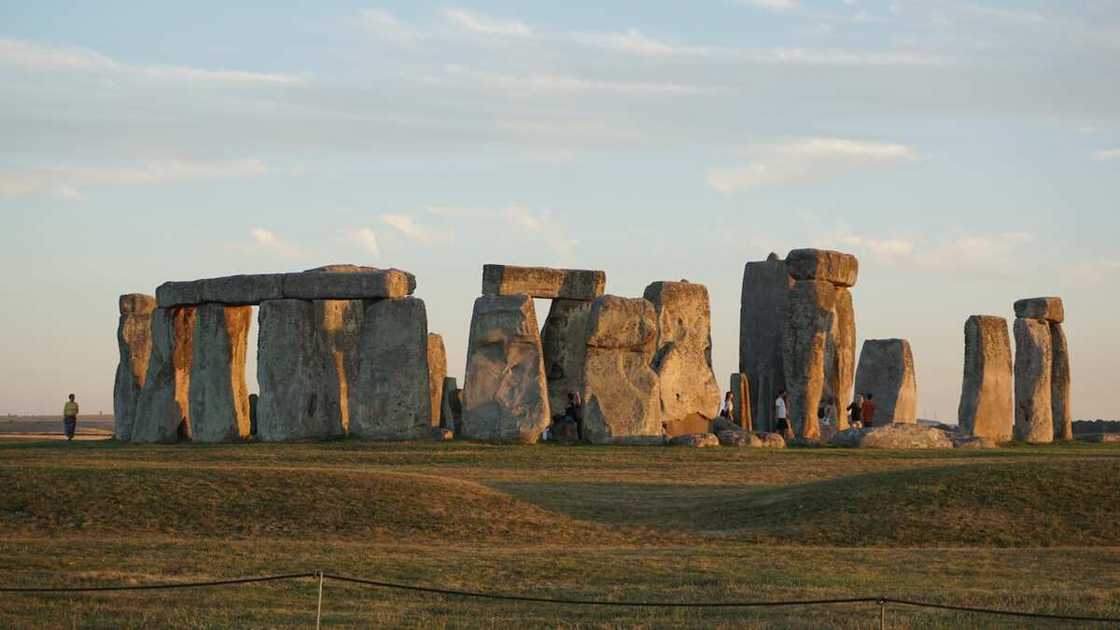
Source: UGC
- Painite is the rarest mineral on earth. It was discovered in 1951, and there are only two dozen of the mineral.
- Rocks can be used to estimate how old the earth is. Scientists have estimated that the earth could be 4.54 billion years old.
- Pumice is the lightest rock on earth. Due to the rock’s porous structure, it floats on water.
- Shale is the most abundant sedimentary rock. It is about 70% of sedimentary rocks on earth.
- Rocks form some breathtaking landmarks on Earth. Some of the notable ones include Balancing Rock (Canada), Old Harry Rocks (Cyprus), Aphrodite’s Rocks (England), Uluru aka Ayers Rock (Australia), and Horseshoe Bend (Arizona, USA).
- The hardness of a mineral is measured using the Mohs mineral hardness scale. The device was invented by German mineralogist freidrich Mohs.
- Humans consider gemstones highly valuable due to their scarcity, beauty, and durability. They are about 100.
- Minerals from rocks are used to make some of the things you use at home. For instance, toothpaste, soap, battery, and some makeup are made from rock minerals.
- A gemstone’s weight is measured in carats. One carat is approximately 0.2 grams.
Fun rock facts for kids
Kids are playful; sometimes, small rocks form part of their playing materials. They are always inquisitive and want to know more about the rocks. These fun rock facts will impress them.
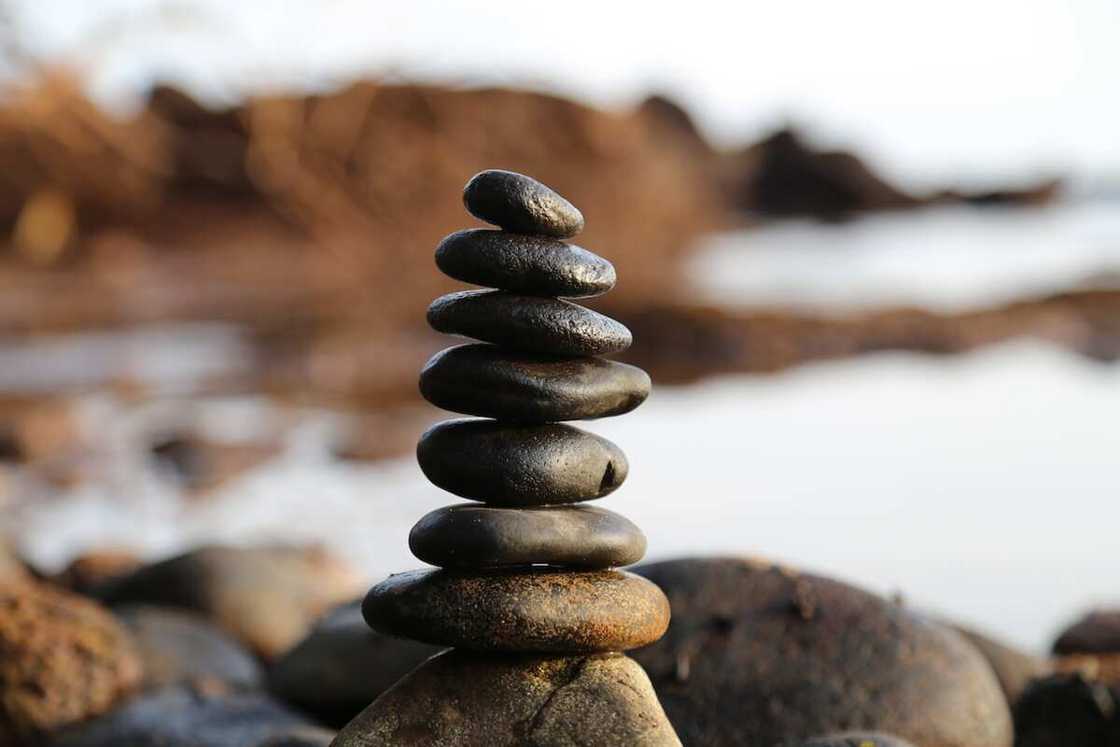
Source: UGC
- The scientific study of rocks is known as geology.
- There are three types of rocks, sedimentary, metamorphic, and igneous.
- Rocks are made up of minerals, while minerals are made up of chemicals found in the earth.
- Magma is molten rock below the earth's surface. It becomes lava when it comes to the earth's surface and when it cools, it forms rocks.
- Rocks are formed from volcanic activities, deposition of sediments, and subjection to mechanical force or heating.
- The most common rock on earth is sedimentary rock. It forms about 66% of the earth’s surface.
- Meteorites are space rocks that fall on the earth. In most cases, they fall into the ocean.
- Rocks were the first tools used by humans, and today, they are an important material in building construction.
- Rocks continuously transform, changing from one type to another. The changes occur naturally in the presence of heat and pressure.
- Some rocks have weird shapes m, resulting in myths about them. For instance, snakestones were once thought to be the remains of coiled snakes that became stone.
- More than four thousand minerals exist, but only 30 of them are abundantly available on Earth.
Difference between rocks and minerals
Dr. Juliet Ugbede Akoh, a lecturer in the Department of Geosciences at the University of Lagos, highlighted the following differences between rocks and minerals during an interview:
Rocks | Minerals |
A rock is a naturally occurring solid mass of geological materials or aggregate of one or more minerals. | A mineral is a naturally occurring, inorganic solid with a definite chemical composition and an ordered crystalline structure formed by geological processes. |
Rocks are categorized into three main types: igneous, sedimentary, and metamorphic. | There are over 4,000 identified minerals on Earth. |
Common rocks include granite, basalt, limestone, and sandstone. | The most common rock-forming minerals include quartz, feldspar, mica, amphibole, olivine, and calcite. |
Some rocks are predominantly composed of just one mineral. For example, limestone is a sedimentary rock composed almost entirely of the mineral calcite. | Minerals are the building blocks of rocks. |
Facts about sedimentary rocks
These rocks result from accumulating mineral and organic particles on the earth's surface. The particles are then compacted during the cementation process. Below are facts about sedimentary rocks worth knowing.
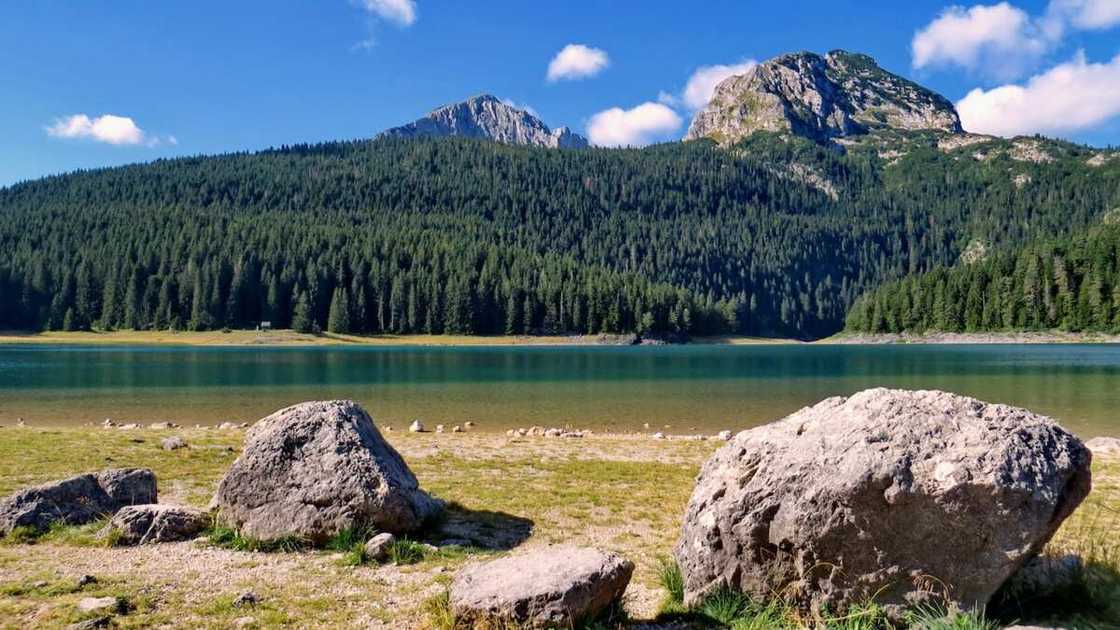
Source: UGC
- The organic and mineral particles that form sedimentary rocks are called sediment.
- Sedimentary rocks are on the planet Mars.
- They constitute 8% of the earth’s crust.
- The color of sedimentary rock may be reddish-brown or greyish-green depending on oxygen availability for oxidation.
- Minerals found in sedimentary rocks are Quartz and Calcite.
- Of all the main rocks, it has the least deposit of major minerals.
- During sedimentation, the rock forms layers called beds or strata.
- The structures formed during deposition are called primary structures, while those that form after deposition are called secondary structures.
- A depositional environment is where sedimentary rock forms and each environment has unique characteristics.
- A sedimentary basin is a place where massive sedimentation takes place.
- The rate of deposition of sediments varies in every formation of sedimentary rocks. Normal sedimentation is slower than catastrophic sedimentation.
Facts about metamorphic rocks
Their name is derived from metamorphosis, meaning change of form. The original forms of the rock are subjected to high heat or pressure. Below are facts you ought to know about the rocks.
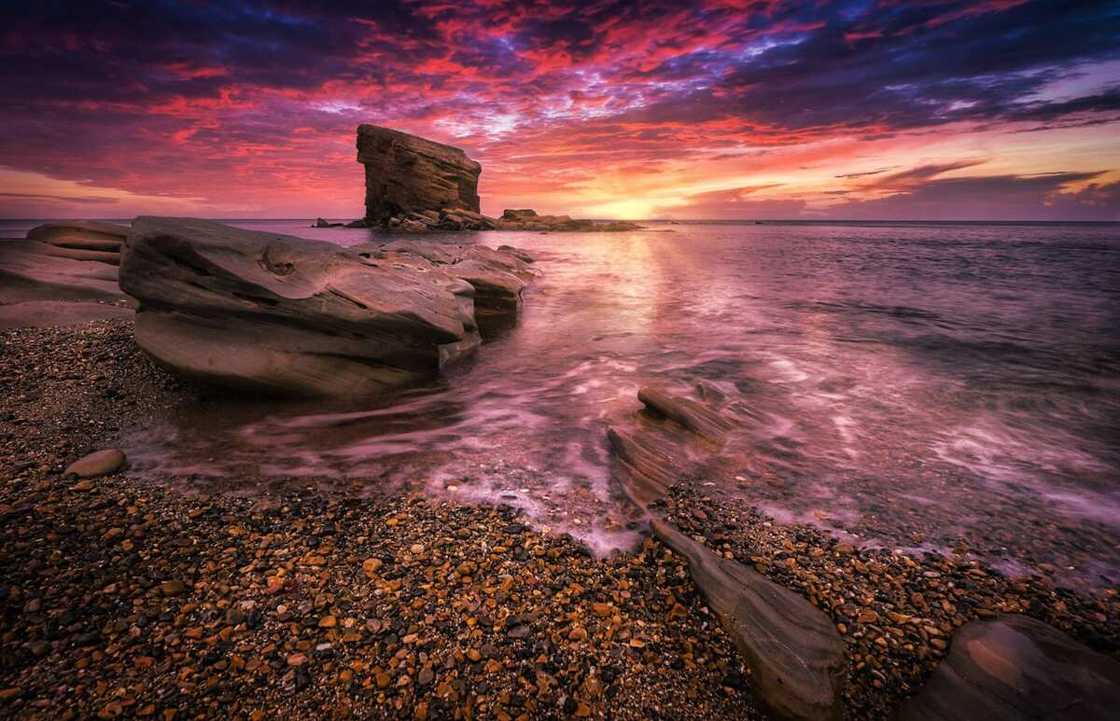
Source: UGC
- An original that has not been metamorphosed is called a protolith. It can be a sedimentary, igneous, or existing metamorphic rock.
- Metamorphic rocks are classified into two groups, foliated and non-foliated rocks.
- Foliated metamorphic rocks are formed when a rock with elongated mineral deposits is under high pressure, making the minerals align to the direction of the pressure.
- Igneous rock such as granite can undergo the process, forming igneous gneiss.
- Non-foliated metamorphic also forms under high-pressure exertion, but the rocks do not have mineral deposits hence mineral alignment or layering.
- Heat and pressure can also transform sedimentary rocks such as bituminous coal, sandstone, and limestone to non-foliated metamorphic rocks like marble, quartzite, and anthracite coal.
- To form metamorphic rock, a rock should be subjected to a temperature of at least 200 degrees Celsius and pressure of not less than 100 megapascals.
- Examples of metamorphic rocks are Gneiss, Slate, Schist, Marble, and Quartzite. Some rocks, such as Slate and Quartzite, are used for construction.
- Some minerals in metamorphic rocks include Micas, Kyanite, Pyroxenes, Sillimanite, Olivines, and Garnet.
- They form 12% of the earth’s surface.
Facts about igneous rocks
The word igneous comes from the Latin phrase "formed from fire". Therefore, igneous rocks are made from solidified magma and lava from the earth’s volcanic activities. Here are fascinating facts about these types of rocks.
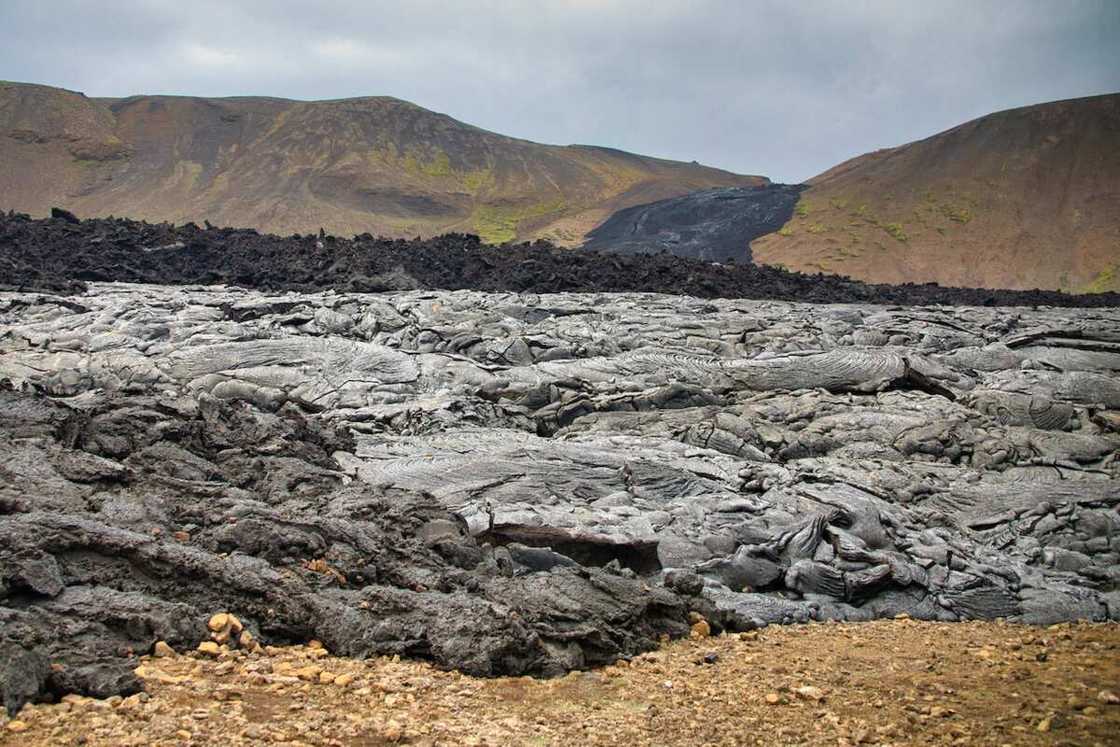
Source: UGC
- The rocks may also be referred to as magmatic rocks.
- The rocks form approximately 15% of the earth’s land surface and a significant proportion of the earth’s oceanic crust.
- These rocks are formed from volcanic activities involving magma emission from the earth’s crust.
- The mineral composition of igneous rocks can provide information about the minerals in the lower crust.
- The rocks can be intrusive or extrusive depending on whether the molten material is below or above the earth's surface.
- Intrusive igneous rocks are formed from magma that cools in the earth’s crust. The slow cooling process makes them have large crystals.
- Intrusive igneous rocks are also plutonic rocks, and their rough surface texture is called phaneritic texture.
- The most common intrusive igneous rocks are Granite and Diorite.
- Extrusive rocks form when magma erupts into lava on the surface and cools to form the rocks on the earth's surface.
- The cooling process of lava on the earth's surface is fast and does not allow the formation of crystals. Therefore, the rocks have small grains and fine textures.
- The most known types of extrusive igneous rocks are basalt and obsidian rocks.
- The formation of the obsidian rock is so fast that it is impossible to see the grains with bare eyes unless with the help of a microscope. The rock almost appears as glass.
- Pumice is an extrusive igneous rock formed when gas is trapped in the cooling lava forming a vesicular texture.
- The rocks may have deposits of important minerals such as tungsten, tin, chromium, platinum, and uranium.
- Igneous rocks are predominately on the moon’s surface.
How rocks are formed
Dr. Akoh provides insights into how the three main types of rocks are formed, she mentions:
- Igneous rocks- Formed when magma or lava cools and solidifies. Magma is created when pre-existing rocks melt at subduction zones or in the Earth's mantle. As magma rises, it cools and crystallizes into igneous rock.
- Sedimentary rocks- Formed when particles like sand, silt, dead plants, and animal skeletons settle out of water or air or when minerals precipitate from water. These particles accumulate in layers and become compacted and hardened into sedimentary rock over time.
- Metamorphic rocks- Formed by the mineralogical and structural changes to rock in its solid state in response to physical and chemical conditions such as heat, pressure, or active fluids, but more commonly by a combination of these factors.
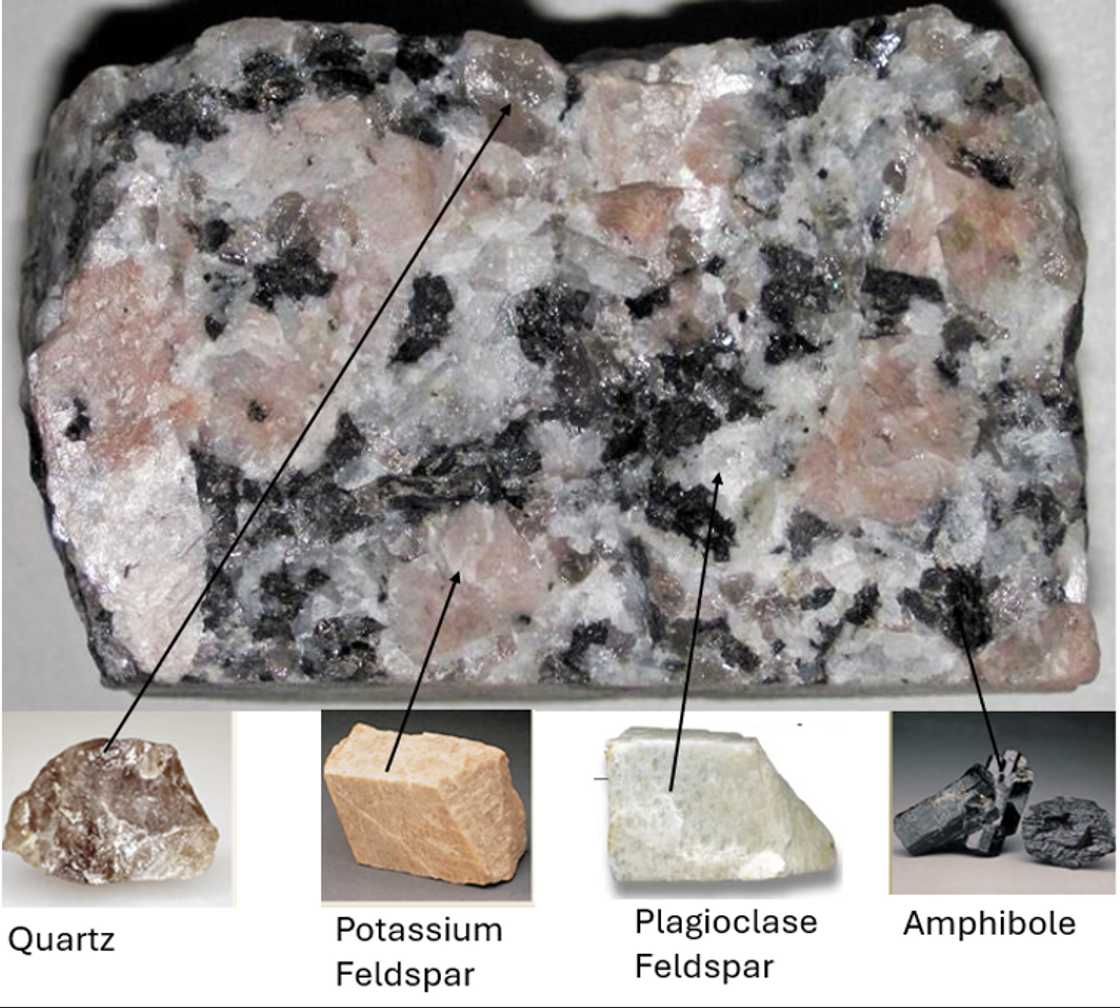
Source: UGC
How minerals are formed
Meanwhile, for minerals, Dr. Akoh said they form through processes like crystallization, precipitation, sublimation, and solid-state reactions. She explained:
- Precipitation from a fluid like H2O (water) or CO2 (carbon dioxide) - This process occurs when minerals precipitate directly out of water. This can take place within the Earth by hydrothermal processes, diagenesis, and metamorphism, and at or near the Earth's surface due to evaporation, weathering, or biological activity.
- Sublimation from a vapor- This process is somewhat rare but can occur around a volcanic vent when minerals precipitate from vapor.
- Crystallization from a melt- This process occurs when magma cools, and atoms form bonds and crystallize out of molten rock (magma) below or at the Earth's surface.
- Solid-state reactions- This process involves minerals reacting with other minerals in the solid state to produce one or more new minerals. These processes occur during metamorphism and diagenesis due to changing temperature and pressure conditions.
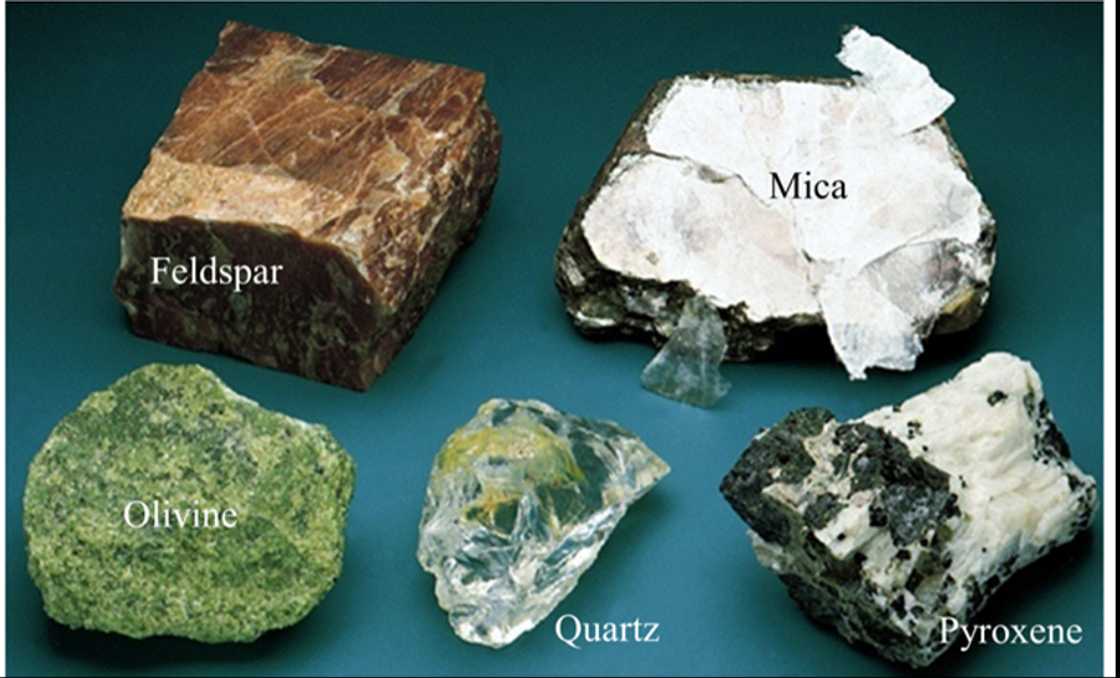
Source: UGC
Mineral classification
According to Dr. Akoh, one of the most common mineral classification methods is the Dana classification scheme established in 1837 by James Dwight Dana, who grouped minerals into nine classes. She mentioned that the most common group of minerals includes:
- Silicates: Most minerals in the Earth's crust and mantle are silicate minerals. You can understand the properties of a silicate mineral, such as crystal shape and cleavage, by knowing which type of crystal lattice it has.
- Sulfides
- Carbonates
- Oxides
- Halides: The halide class is composed of minerals in which an element of the halogen group, such as fluorine (F), chlorine (Cl), bromine (Br), or iodine (I), provides the anion. Halite, Sodium Chloride (NaCl), is a halide mineral.
- Sulfates
- Phosphates
- Native Elements: These are uncombined single elements. E.g. Gold (Au), native copper (Cu), lead, iron, nickel, and other rarer elements palladium, iridium, and osmium. Mercury, tantalum, tin, and zinc are all native element minerals.
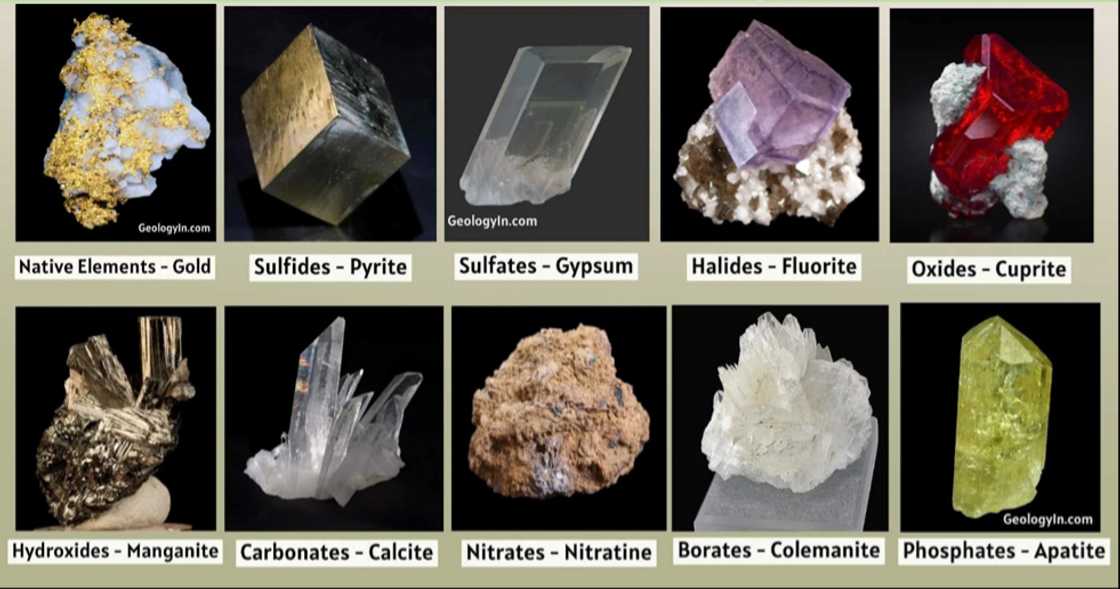
Source: UGC
Tips from expert
Dr. Akoh also provided practical guidance on pursuing a career in geology or mineralogy. She advises:
1. Build a strong foundation in science:
- Focus on chemistry, physics, geography, biology, and math subjects in school. These are essential for understanding the Earth's geological processes.
- Learn basic Earth science concepts such as plate tectonics, the difference between rocks and minerals, the rock cycle, and mineral properties.
2. Gain practical experience because hands-on experience is key:
- Start collecting and identifying rocks and minerals.
- Participate in field trips or outdoor activities that allow you to observe landscapes, rock formations, and mineral deposits.
3. Learn to use tools and technology:
- Familiarise yourself with geological tools like the hand lens, geologic hammer, and GPS devices for fieldwork.
- Learn to use software like GIS (Geographic Information Systems) and imaging tools, which are valuable in modern geology.
4. Pursue formal education:
- Enrol in an Earth sciences program (geology) at the university. Take core geology courses such as crystallography, petrology, sedimentology, and structural geology.
With the above facts about rocks, now you know that they are not the usual stones you see around you. There are many things to learn about rocks, yet researchers continue to unearth more information about them. Do not hesitate to share the facts with your friends who love rocks.
READ ALSO: 70+ cute rainy day quotes for people who enjoy a little drizzle
Legit.ng recently published an article about rainy day quotes. In most communities, rains signify blessing, and rainy seasons are considered the seasons of abundance. If you love rainy days, then these quotes will suit you.
The drizzles can refresh you if you feel worn out, so do not hesitate to walk in the light showers. If your friends enjoy the little drizzle, sharing these quotes with them is fun and can make them appreciate the season.
Source: Legit.ng

Muhunya Muhonji (Lifestyle writer) Muhunya is a graduate of Agricultural Economics from Egerton University, Class of 2014, with a passion for storytelling and content creation. Since joining Legit.ng as a writer in July 2021, he has covered diverse topics such as entertainment, technology, business, and biographies. His journalism journey has seen him complete multiple professional courses, including the AFP Digital Investigation Techniques course (2023), the Google News Initiative course (March 2024), and Fact-Checking and Research training (September 2024). Email: muhunyah@gmail.com

Mary Ugbodaga (Lifestyle Journalist) Mary Ugbodaga is a Legit.ng journalist with 7 years of experience in journalism and media communications. She graduated from Covenant University in 2018 with a Bachelor's degree in Mass Communication/Media Studies. Mary previously worked as a journalist at TheCable, CNBC AFRICA, Voice of Nigeria, KPMG Nigeria. Email: mary.ugbodaga@corp.legit.ng.


